Osteoporotic osseointegration: therapeutic hallmarks and engineering strategies
- PMID: 38994021
- PMCID: PMC11234277
- DOI: 10.7150/thno.96516
Osteoporotic osseointegration: therapeutic hallmarks and engineering strategies
Abstract
Osteoporosis is a systemic skeletal disease caused by an imbalance between bone resorption and formation. Current treatments primarily involve systemic medication and hormone therapy. However, these systemic treatments lack directionality and are often ineffective for locally severe osteoporosis, with the potential for complex adverse reactions. Consequently, treatment strategies using bioactive materials or external interventions have emerged as the most promising approaches. This review proposes twelve microenvironmental treatment targets for osteoporosis-related pathological changes, including local accumulation of inflammatory factors and reactive oxygen species (ROS), imbalance of mitochondrial dynamics, insulin resistance, disruption of bone cell autophagy, imbalance of bone cell apoptosis, changes in neural secretions, aging of bone cells, increased local bone tissue vascular destruction, and decreased regeneration. Additionally, this review examines the current research status of effective or potential biophysical and biochemical stimuli based on these microenvironmental treatment targets and summarizes the advantages and optimal parameters of different bioengineering stimuli to support preclinical and clinical research on osteoporosis treatment and bone regeneration. Finally, the review addresses ongoing challenges and future research prospects.
Keywords: Applications; Bone regeneration; Bone tissue engineering; Engineering stimuli; Osteoporosis.
© The author(s).
Conflict of interest statement
Competing Interests: The authors have declared that no competing interest exists.
Figures
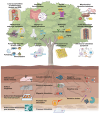

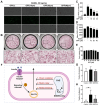


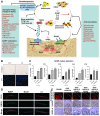

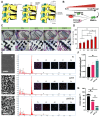
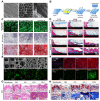

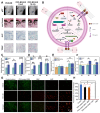
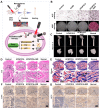
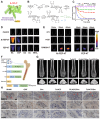
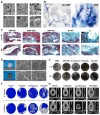
Similar articles
-
Enhanced osseointegration of three-dimensional supramolecular bioactive interface through osteoporotic microenvironment regulation.Theranostics. 2020 Mar 26;10(11):4779-4794. doi: 10.7150/thno.43736. eCollection 2020. Theranostics. 2020. PMID: 32308749 Free PMC article.
-
Metformin promotes the osseointegration of titanium implants under osteoporotic conditions by regulating BMSCs autophagy, and osteogenic differentiation.Biochem Biophys Res Commun. 2020 Oct 15;531(2):228-235. doi: 10.1016/j.bbrc.2020.06.146. Epub 2020 Aug 13. Biochem Biophys Res Commun. 2020. PMID: 32800340
-
Mitochondrial dysfunction and therapeutic perspectives in osteoporosis.Front Endocrinol (Lausanne). 2024 Feb 2;15:1325317. doi: 10.3389/fendo.2024.1325317. eCollection 2024. Front Endocrinol (Lausanne). 2024. PMID: 38370357 Free PMC article. Review.
-
Polyphenols and Functionalized Hydrogels for Osteoporotic Bone Regeneration.Macromol Rapid Commun. 2025 Jan;46(2):e2400653. doi: 10.1002/marc.202400653. Epub 2024 Nov 26. Macromol Rapid Commun. 2025. PMID: 39588839 Review.
-
Bone tissue engineering in osteoporosis.Maturitas. 2013 Jun;75(2):118-24. doi: 10.1016/j.maturitas.2013.03.004. Epub 2013 Apr 4. Maturitas. 2013. PMID: 23562167 Review.
Cited by
-
Trifunctional Sialylation-Based SF-ZIF@NA Hydrogel for Selective Osteoclast Inhibition and Enhanced Bone-Vessel Regeneration in Osteoporotic Bone Defects.Adv Sci (Weinh). 2025 May;12(19):e2415895. doi: 10.1002/advs.202415895. Epub 2025 Mar 26. Adv Sci (Weinh). 2025. PMID: 40135851 Free PMC article.
-
Metformin facilitates osteogenic differentiation of bone marrow stromal cells through AMPK-dependent autophagy: an investigation into the healing of osteoporotic fractures in murine models.J Orthop Surg Res. 2025 Jul 16;20(1):661. doi: 10.1186/s13018-025-06067-6. J Orthop Surg Res. 2025. PMID: 40671012 Free PMC article.
-
Implant Design and Its Applications in the Fixation of Osteoporotic Bones: Newer Technologies in Nails, Plates and External Fixators.Indian J Orthop. 2024 Dec 2;59(3):280-293. doi: 10.1007/s43465-024-01295-0. eCollection 2025 Mar. Indian J Orthop. 2024. PMID: 40201911 Review.
-
Stabilization of Osteoporotic Pelvis and Acetabular Fractures.Indian J Orthop. 2025 Jan 4;59(3):300-310. doi: 10.1007/s43465-024-01329-7. eCollection 2025 Mar. Indian J Orthop. 2025. PMID: 40201909 Review.
References
-
- Ebeling PR, Nguyen HH, Aleksova J, Vincent AJ, Wong P, Milat F. Secondary Osteoporosis. Endocr Rev. 2022;43:240–313. - PubMed
-
- Goulding A, Jones IE, Taylor RW, Manning PJ, Williams SM. More broken bones: a 4-year double cohort study of young girls with and without distal forearm fractures. J Bone Miner Res. 2000;15:2011–8. - PubMed
-
- European Prospective Osteoporosis Study G, Felsenberg D, Silman AJ, Lunt M, Armbrecht G, Ismail AA. et al. Incidence of vertebral fracture in europe: results from the European Prospective Osteoporosis Study (EPOS) J Bone Miner Res. 2002;17:716–24. - PubMed
Publication types
MeSH terms
Substances
LinkOut - more resources
Full Text Sources
Medical

